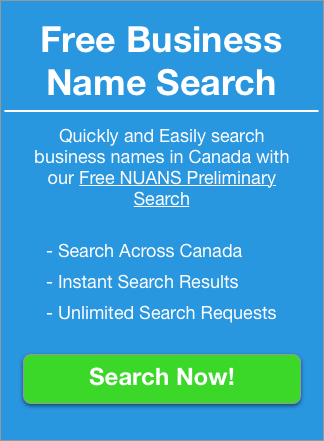How to Register a Company in Ontario in 5 Steps

Are you interested in learning how to register a corporation in Ontario? Are you a little lost and don’t know where to begin?
Registering a business may seem like a lengthy, intimidating process. It can also be a little overwhelming if you’ve never launched a business before. Between figuring out how to reach potential customers and where to put your storefront, it’s a lot to think about.
Luckily, we put together an in-depth guide on the right way to register a corporation in Ontario.
Take the guesswork out of launching your business with the help of this handy guide!
How to Register a Corporation in Ontario in Five Simple Steps
Learning how to register a corporation isn’t as tedious as you might think. With the help of our guide, you’ll be ready to register in Ontario in no time.
Step 1: Choosing your business name
First things first– before you can start the registration process, you’ll need to figure out your business name. There are several ways to do this, as well as different types of names to choose from.
You can choose either a “corporate” name or a “numbered” corporate name.
Your corporate name must be easy to distinguish
Your name cannot be deceptive.
For example, if you’re starting up a skin care boutique, you cannot name your business after a doctor’s office. If you’re not providing licenced medical care, this would be a misleading name.
In the same fashion, you cannot choose a name that could be easily confused with other (often well-known) businesses. This would also be misleading. For example, if you sell shoes in a similar matter as Designer Shoe Warehouse, you cannot use their company name or a similar name.
In Ontario, you’ll need to do a NUANS name search before your new corporate name can be approved. The NUANS report lists business names as well as trademarks that have already been claimed or reserved. Doing a search will help avoid picking a name that’s already being used by another company.
A NUANS name report must be less than 90 days old to be considered valid.
Step 2: Articles of Incorporation
The next step is to file the Articles of Incorporation.
Articles of Incorporation are a set of documents you will need to file with the government to properly (and legally) document the beginnings of your corporation. Articles of Incorporation typically contain the following things:
- Your corporate name verified through a name search.
- Your business’ intention or purpose. This can be split between “general” and “specific.” Should you opt for specific, you’ll need to get more in-depth on your business’ intended niche.
- The address of the Registered Head Office. This cannot be a PO box.
- The number of directors established for the business.
- Borrowing restrictions for business directors.
- The names and addresses of the founding directors. In Ontario specifically, a minimum of 25% of the directors must be Canadian residents. If there are three or fewer directors involved, one of them must be a Canadian resident.
- Limitations of the business.
- The classes of shares and the amount of each class of share that will be issued. Some classes of shares titles include Class A or B, Preferred, or Common.
- The rights of each class of shares.
- Restrictions on the transfer or ownership of said shares.
- Miscellaneous items such as voting rules and other relevant content.
- Signatures.
Articles of Incorporation can be filed in person, by mail, or online.
Step 3: Application processing
Once you’ve filed the Articles of Incorporation your registration will need to be processed. Turn around times vary depending on the filing method you have chosen.
If items are missing from your application you will be notified and will need to provide the necessary information before the registration can be completed.
If your application is accepted, you will receive your Certificate of Incorporation. You should also keep a copy of your completed Articles of Incorporation on file as well. These are both important documents for your corporation.
Step 4: Initial Return
The third step when incorporating in Ontario is to file your Initial Return. After your corporation has been registered you will need to file your Initial Return within 60 days of incorporating.
Your Initial Return is not a tax return, but confirms the Registered Head Office Address and Directors as well as indicates the elected Officers. If the address, or Director information has changed you can update it when filing your Initial Return.
Processing times for the Initial Return also vary depending on the method of filing.
Step 5: Corporate Supplies
When operating an Ontario Corporation you will be required to maintain certain records. To help keep you organized you may want to obtain a Corporate Minute Book.
While Minute Books are not specifically required by the Ministry they are specifically designed for keeping your records organized which can help save administrative time so you can focus on growing your business.
Minute Books can be obtained through a Corporate Supplies package, which include Share Certificates and a Corporate Seal.
Conclusion
Looking to register your business as an Ontario Corporation? We can help!
Here at Opstart we specialize in Ontario Corporate registrations and making the filing process fast and easy. In fact, when ordering your NUANS Name Reservation report online you’ll receive it by email within 15 minutes. Filing Articles of Incorporation are completed within 2 business hours.
And if you need any help with the process please feel free to contact us.

